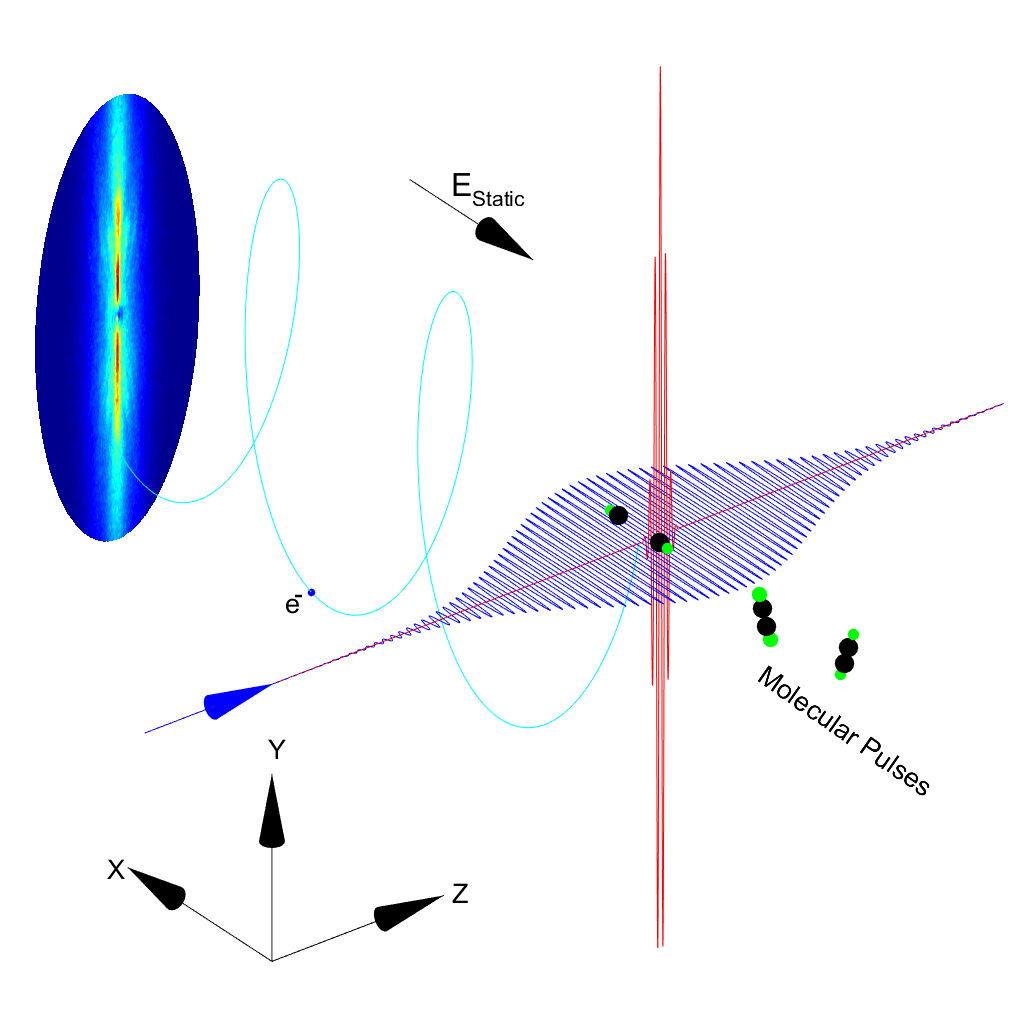
Currently strong-field physics is shifting towards the use of mid-IR sources as these new sources present many improvements compared to the more classic Ti:Sa 800nm laser systems. In Femtolab these new possibilities where also recognized and the initial goal of Rasmus Ranch Johansen's Phd was to establish such a source. Our aim with the new source is foremost to further investigate and test the theoretical foundation for strong field ionization.
When a molecule is ionized by a sufficiently strong laser pulse the ionization is no longer a direct result of the absorption of photons but instead due to tunneling into the continuum as a result of the bending of the binding potential due to the strong field. This picture is only valid for sufficiently strong and slowly oscillating field, which is why moving to longer wavelengths and shorter pulses is critical.
The end goal of the new setup has from the very beginning been to produce a "Molecular Movie". To do this the atomic motion inside the molecule, which is on the order of Ångströms, needs to be spatially resolved while still resolving the temporal evolution witch is on the femtosecond timescale. This is a very challenging problem, but we believe these new sources will light the way.
The method is called Laser Induced Electron Diffraction, or LIED, and the idea is to tunnel ionize the molecule to be investigated by the method described above. The now free electron is then born in the presence of a strong electric field, and is therefore accelerated. At some later stage, depending on the center wavelength, the field will change and point in the other direction, but the electron is still accelerated. The energy the electron reaches is strongly dependent on the center wavelength of the ionizing pulse, and for these mid-IR pulses the energy is expected to be high enough that the de-Broglie wavelength of the electron reduces below the intra-molecular distances. This results in a diffraction pattern when the electron rescatters on its parent molecule. By recording this diffraction pattern the intra-molecular distances can be extracted. Slightly changing the carrier wavelength directly translates to changing the rescattering time, therefore a molecular movie is possible with both fs temporal resolution and sub-Ångström spatial resolution.

The picture shows a gas-filled fiber used to spectrally broaden the pulses. This is required before the pulses can be temporally compressed into the few-cycle limit. The center wavelength of the pulse is in the mid-IR and should thus not be visible to the human eye, yet it appears bright white. This is direct evidence of the extremely broadband spectrum that reaches all the way into the visible region.